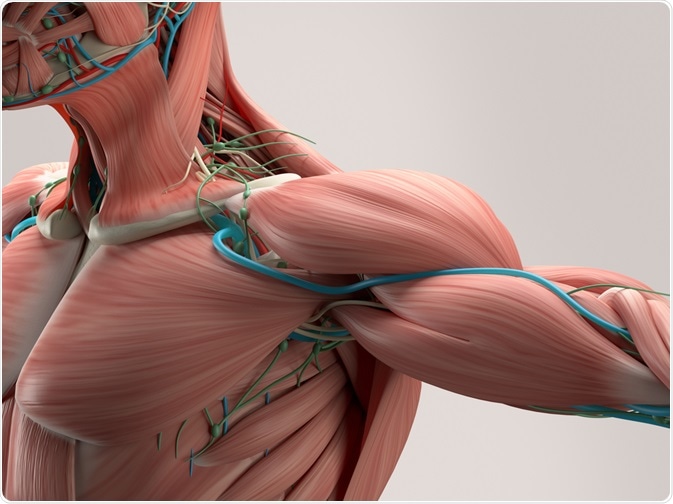Electrochemistry refers to the study of the chemical processes that are responsible for the movement of electrons in electricity. The history of electrochemistry is replete with several major discoveries since the sixteenth century.
 Anatomy Insider | Shutterstock
Anatomy Insider | Shutterstock
Luigi Galvani
One of the first experiments regarding electrochemistry was performed by Luigi Galvani in 1786. His experiment began when he observed that the legs of a frog that he had dissected twitched as it lay next to an electrostatic generator.
In an attempt to understand this observation, Luigi hung the frog's leg from an iron railing with a brass hook and saw what had happened during a thunderstorm. He found that the leg contracted when there was a thunderstorm, but also when there was no thunderstorm and the leg was in contact with another part of the railing.
He subsequently called this observation ‘animal electricity’, as he thought the leg had some form of electricity. Nonetheless, these early experiments by Luigi Galvani gave rise to the concept of ‘galvanism’, which refers to the movement of muscles in response to electricity.
Alessandro Volta
Around 1800, another Italian scientist named Alessandro Volta contested the findings and interpretation of Galvani, as well as the concept of ‘animal electricity’. He proposed that the electricity was actually generated not because of any inherent electricity present in frog legs, but because two different metals (iron and brass) were connected by a moist conductor (frog’s legs).
He further tested and proved his hypothesis by creating so-called ‘voltaic pile’. Volta connected two different metals with a piece of cloth or cardboard that was soaked in salt solution which is an electrolyte. He created a pile with alternating elements of copper and zinc with an electrolyte between them and generated electricity with this arrangement. Volta found that he could also manage the amount of electricity produced by changing the number of piles. This was the first example of a practical battery.
Discovering electrolysis
During the same time as the discovery of the first battery in Italy, studies were also being conducted in England by researchers Nicholson and Carlisle. These researchers discovered that water could be split into its constituent elements by passing electricity through it – a process that is now known as electrolysis.
The observation was confirmed by the bubbles of oxygen and hydrogen that were present at the electrodes. A scientist from Germany, Johann Wilhelm Ritter, measured the amount of oxygen and hydrogen that were produced, quantifying the process. He also discovered the concept of electroplating, which refers to the deposition of dissolved metal ions on the electrode, forming a thin coating on its surface.
Humphrey Davy
During the early 1800s, Humphrey Davy, a scientist at the Royal Institution at London, found that the concept of voltaic pile involved more than the contact of different metals. Using the concept of the voltaic pile, he used electricity generated by the pile to separate different compounds into their constituents.
Using these methods, Davy discovered several new elements (such as potassium, sodium, strontium, barium, calcium, and magnesium). He also came to the conclusion that an electrical force keeps different elements together in compounds.
Michael Faraday and John Frederic Daniell
Michael Faraday was a student of Davy who he made several significant advancements, bridging the fields of magnetism and electricity. In 1821, he made the first electric motor; moreover, in 1831, he made the first dynamo. He also discovered the laws of electrolysis that are still applicable for generating metals and compounds.
A British scientist John Frederic Daniell came up with the concept of ‘Daniell cell’. This cell consists of two components, where a copper vessel is filled with copper sulphate solution. In this vessel, a second container is immersed that consists of sulphuric acid and zinc electrode.
Later years
In 1901, the Edison Storage Battery Company was started by Edison and he invented the Nickel/Iron battery in 1914. Nikola Tesla, an American-Serbian inventor, initially worked for Edison. However, both of them had a professional rivalry – Tesla was a strong proponent of alternating current, while Edison believed that direct current was safer. Tesla patented the polyphasic alternate current system in 1888.
Sources
- libraries.mit.edu/…/
- http://krc.cecri.res.in/hoe/hoec.htm
- https://www.electrochem.org/birth-of-electrochemistry
Further Reading
- All Electrochemistry Content
- Electrochemical Analysis
- What is Electrochemical Mass Spectrometry (EC-MS)?
- Applications of Electrochemistry Mass Spectrometry (EC-MS)
- Using EC-MS to Study Neurotransmission
Last Updated: Jan 9, 2019

Written by
Dr. Surat P
Dr. Surat graduated with a Ph.D. in Cell Biology and Mechanobiology from the Tata Institute of Fundamental Research (Mumbai, India) in 2016. Prior to her Ph.D., Surat studied for a Bachelor of Science (B.Sc.) degree in Zoology, during which she was the recipient of anIndian Academy of SciencesSummer Fellowship to study the proteins involved in AIDs. She produces feature articles on a wide range of topics, such as medical ethics, data manipulation, pseudoscience and superstition, education, and human evolution. She is passionate about science communication and writes articles covering all areas of the life sciences.
Source: Read Full Article
